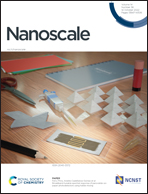A guide to the design of magnetic particle imaging tracers for biomedical applications
Abstract
Magnetic Particle Imaging (MPI) is a novel and emerging non-invasive technique that promises to deliver high quality images, no radiation, high depth penetration and nearly no background from tissues. Signal intensity and spatial resolution in MPI are heavily dependent on the properties of tracers. Hence the selection of these nanoparticles for various applications in MPI must be carefully considered to achieve optimum results. In this review, we will provide an overview of the principle of MPI and the key criteria that are required for tracers in order to generate the best signals. Nanoparticle materials such as magnetite, metal ferrites, maghemite, zero valent iron@iron oxide core@shell, iron carbide and iron–cobalt alloy nanoparticles will be discussed as well as their synthetic pathways. Since surface modifications play an important role in enabling the use of these tracers for biomedical applications, coating options including the transfer from organic to inorganic media will also be discussed. Finally, we will discuss different biomedical applications and provide our insights into the most suitable tracer for each of these applications.

- This article is part of the themed collection: Recent Review Articles


 Please wait while we load your content...
Please wait while we load your content...